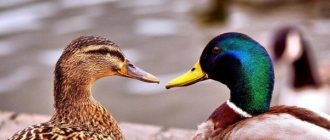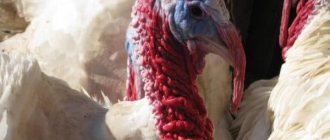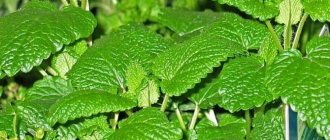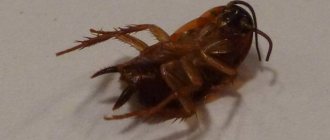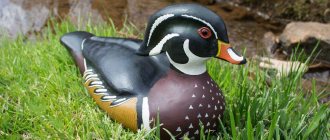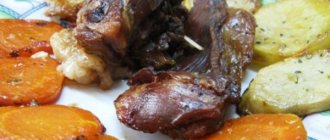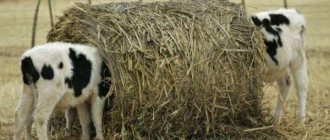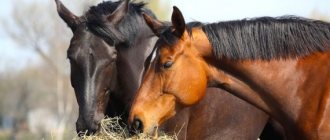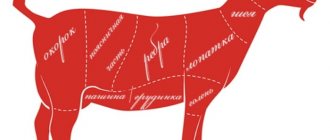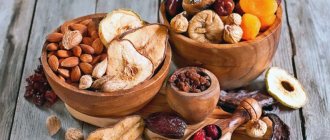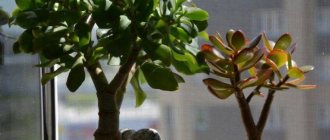Home » Articles about ducks » How to properly pluck a duck at home
The duck is usually slaughtered at 60-65 days of age. By this moment, the ducklings have gained weight of about 2.5 kg, their feather cover has time to fully form, but molting has not yet begun. To ensure that the process of removing feathers does not take much time, and the carcass retains its presentation, it is important to know how to pluck a duck correctly. At home, “dry” and “hot” methods are used.
Preparatory procedures
Before choosing a method for plucking a duck, you should familiarize yourself with the preparatory steps before slaughter:
- It is better to slaughter on the 60th – 70th day. By this period, the duck had already developed feathers, but there were no flight feathers yet. It is also worth waiting time for the feathers to grow by at least 10-15 cm. However, you should not wait more than 10 days, otherwise the feathers will be very difficult to get;
- If it was not possible to slaughter the bird in time, then it is better to carry out the process after the juvenile molt. By this time, the feathers will have reached a length that will be convenient for removal;
- 12-16 hours before slaughtering a bird, you cannot feed it. You can only serve drinks;
- the duck is separated from the flock on the last night before slaughter and kept in a room with the lights on;
- the bird is killed by hitting the skull;
- the bird is then hung by the feet to cut its throat. After 10 minutes, the blood should drain and the duck can be plucked.
Following some subtleties will solve the problem of how to pluck a duck at home quickly:
- During the molting period, birds should not be slaughtered. To find out whether a duck is molting or not, you need to tug on its feathers. If the feathers are easily obtained, then the duck can be slaughtered. During molting, feathers are difficult to remove.
- After slaughter, the carcass must be stored in a cool place. The room temperature should be no higher than 5 degrees. During this time, the fat will harden, and the meat will acquire flavor due to the liquid that has evaporated.
- The process itself must be done in the yard, as a lot of garbage is generated. You immediately need to prepare three containers: for large feathers, for small feathers and for down. It is more convenient to pluck while sitting, placing containers for feathers under your feet.
- Pulling is carried out in a certain sequence: first the tail and wings, and then the chest and back.
- Movements must be confident. If pulled out smoothly, the skin may be damaged.
Further actions
If immediately after the initial cutting of the duck it is planned to use it for food (but not entirely stuffed or fried, but in parts), then do the following:
- First, you need to separate the hams from the carcass. They do this with a large knife, cutting off the meat as close to the back as possible.
- The wings are cut off by making cuts along the spine.
- The loin parts are cut by making an initial cut along the keel.
- It is better to cut off the ribs and tail not with a knife, but with ordinary scissors.
- The remaining spine can be cut into 2-3 parts and used to make soup.
In addition, there is no need to try to chop (cut) the tubular bones - this will lead to the fact that the dish prepared from duck will contain small sharp bones that are dangerous to the tongue and palate of a person.
Plucking methods
There are two methods for plucking a duck at home: dry and hot. Each method has advantages and disadvantages.
We recommend reading —>>> Quail in the oven: the most popular recipes
Advantages of dry plucking methods:
- easy to do;
- a minimum number of tools is required;
- it is possible to store a plucked duck carcass in the refrigerator;
- the natural color of the skin is preserved;
- fluff and feathers can be used in the future.
Disadvantages of dry methods:
- stumps remain;
- fluff flies in all directions;
- it takes a lot of time.
Advantages of hot plucking methods:
- can be used in field conditions;
- can be applied at any time after slaughter;
- the bird is cleaned better and no stumps remain;
- easier to pull out feathers;
- It is possible to pluck a duck much faster.
Disadvantages of hot methods:
- you can burn your hands;
- the carcass cannot be stored after plucking;
- the skin becomes red;
- down and feathers are unsuitable for further use.
Universal devices for mechanical plucking of poultry
- drill attachment for plucking game;
- feather removal attachment for drill;
- attachment for plucking feathers from wild and domestic carcasses;
- mechanical plucker;
- feather;
- plucking apparatus;
- feather plucking machine;
- chicken pick;
- feather remover;
- feather picker;
- pincher and many others.
These devices are united by a design that consists of a cylindrical metal container with multiple holes. You need to insert special rubber tips with spiral-shaped notches sticking out in different directions into them.
The device for quickly plucking poultry works using a drill, screwdriver, or hammer drill. They can process carcasses of any size and breed of poultry. Using a feather removal device at home or in the forest while hunting saves time and effort. The result is a clean and smooth carcass that does not require additional scraping or singeing. Moreover, the price of such a device is affordable for every housewife or hunter.
There are a lot of fakes and low-quality attachments from various companies on the market for these pen removal devices, which are multiplying every day. In the manufacture of our plucking attachments, we use high-quality materials and a unique rubber technology that no one can counterfeit, which will allow you to quickly pluck any bird.
Hot duck plucking methods
There are two options for plucking a duck at home by hand using hot methods: scalding and hot bagging.
After the bird comes into contact with hot water, it must be given time to cool. However, the bird should not be overcooled. The best option is when your hands are patient, but the skin is still noticeably warm.
scalding method
It can be used 4 hours after slaughter. Do not use boiling water, as the skin may burst.
To implement this method you need to prepare:
- a pan in which the bird will be placed;
- kettle;
- large and small tweezers;
- bags for feathers;
- knife
The plucking process using the scalding method includes the following steps:
- The bird is placed in a pan.
- You need to pour water into the kettle and heat it to 80 degrees.
- All parts of the carcass are doused with water. Water must be poured onto the feathers. The feathers are raised to allow water to flow onto the skin.
- Pour hot water into the pan until the duck is completely covered.
- Wait 15 minutes and remove the carcass.
- Remove feathers by turning your hand slightly against growth.
- Remove remaining fluff. Possible burning of skin.
You can not water the bird first, but immediately immerse it in water. In this embodiment, heating is carried out for 1-2 minutes. However, the carcass will cool down quickly. To avoid burning your fingers, hang the bird by its feet or use tongs to hold it.
Using a bag
This method involves two options: with or without an iron. A cloth bag will allow you to effectively steam the skin. This opens the pores that hold the feathers. An iron is used to enhance the effect. In addition, a saucepan, tweezers and a feather bag are used.
The process involves the following steps:
- Take a clean canvas bag and place it in boiling water for 5 minutes.
- The water is drained and the bag is wrung out.
- The duck is placed in a bag and tied tightly.
- Water heated to 80 degrees is poured into the pan. A bag with a carcass is placed in it for 15 minutes. When using an iron, keep the carcass in water for 5-7 minutes. Then, taking it out of the pan, iron it right in the bag on all sides.
- Remove the bird from the bag, pluck it, and dry it. If necessary, it can be scorched.
Some poultry farmers iron the wrung-out bag and only then put the carcass in it. Sometimes a bag of poultry is suspended over a pan, from which active steam emanates. The iron or steam should not operate for more than 5-10 minutes.
Indo-duck cutting
Cutting a duck is an important process that greatly affects the quality of the meat! Therefore, when cutting, it is important not to miss a single detail. Place the singed carcass on a cutting board with the neck forward and perform the following manipulations:
- cut off the neck;
- use a sharp knife to make a cut in the abdomen from the pectoral cartilage to the tail;
- remove the entrails, separate the offal from the intestines;
- remove the bird's crop and esophagus through the neck;
- remove all fat deposits inside the abdomen;
- Wash the duck thoroughly under running water.
The carcass is ready to go into the refrigerator, freezer or for sale. It remains to spend a couple of minutes on the giblets:
- All arteries are removed from the heart;
- the ventricle is cut, cleaned of food debris, and the film is removed;
- The spleen is separated from the liver.
Giblets can be sold either separately or together with the duck, and if the duck was slaughtered for home use, they will be an excellent addition to the meat in soup or borscht.
If the duck needs to be cut completely, you will need to do the following:
- cut off the drumstick, grabbing as much meat on the back as possible;
- cut off the hams, also cutting off most of the meat;
- make a longitudinal incision on both sides of the pectoral process and separate the loin from the bones;
- cut the ribs and tail from the sirloin;
- separate the sebaceous glands and cut into several pieces;
- the remaining meat can be trimmed or left on the frame
The remaining frame can be used to prepare broths and other first courses, getting a good fat from it. The weight of the brisket of large drakes reaches up to 800 grams, which is significantly more than that of the Peking breed (350 grams).
You can store meat in various ways:
- At a temperature of 0-4 °C, meat can be stored for up to three to five days, then it must be cooked or frozen.
- If for some reason it is not possible to use the refrigerator, then the bird is placed in a fabric bag soaked in vinegar.
- Another storage method is salting; it is used on undivided ducks. In order for the duck to be saturated with salt, we will make the following solution: 300 grams of salt per 1 liter of water. The approximate consumption of such a solution is 150 g per 1 kg of meat. Then the solution is poured through the throat using a syringe, after which the throat is tied and the duck is hung upside down. The duck is marinated for a day, and then the solution is drained.
Dry duck plucking method
Tools you will need: large and small tweezers, a feather bag, a knife.
We recommend reading —>>> How to grill?
The method involves:
- Place the bird on your lap or any hard surface.
- Pluck feathers 5-6 pieces in the direction of their growth. You need to start from the chest and neck to the back, wings and tail. It is better to remove the feathers in one motion. This should not be done abruptly, as it can easily damage the skin.
- Small feathers are removed with a dull knife. You need to press the blade lightly and move it against the growth line. The thumb presses the bristles onto the knife.
- The plucked bird is wiped with a cloth.
Using the attachment
This option uses a pen-removal attachment for a hammer drill or grinder. This device consists of “rubber fingers” that are located in different directions. To use such an attachment, you need any electric tool that has adjustable rotational movements. The working process is that the device imitates the movements of human fingers. To pluck using this method, you need to bring the bird to the tool.
singeing
Singeing refers to additional methods of plucking poultry. It is carried out in the following order:
- The duck must be held by the feet. It is required that all folds be straightened out.
- The carcass is brought to the burner. However, you cannot keep it close to the fire. The carcass must be twisted in all directions so that the fluff does not melt. With the right distance, the stumps will fall out rather than burn.
- After singeing, the bird is washed with water.
The bird should not be held over the fire for more than two minutes. Otherwise, the fat under the skin will melt.
Using wax
This method is popular among hunters. To complete it you need:
- Remove the bird's wings. The paws must be left to hold the carcass.
- Feathers are removed from the tail and wings. Large feathers from the belly and back are also removed.
- Two containers are prepared. Cold water should be poured into one, and hot water into the other.
- It is necessary to remove boiling water from the stove. Wax is placed in it. The wax melts and a thin film appears.
- Place the duck in a container with wax and water. Keep it in the pan for three seconds. If you keep the bird longer, the internal organs may burst and damage the skin.
- Next, the bird is lowered into a container of cold water. This is done to allow the wax to harden.
- The duck is taken out of the water. You need to press on it so that the wax cracks. Then the wax is removed and a beautiful and smooth carcass is obtained.
Searing the carcass
Searing is necessary to remove small hairs and fluff that would take a lot of time to remove manually. In addition, this process gives the duckling skin a pleasant aroma and color.
The simplest, most reliable and most common method of singeing is using a gas burner. The procedure is very simple and even an inexperienced person can handle it. The procedure is as follows:
- cut off the wings and paws of a plucked duck; they are singed separately;
- remove the lid from the gas burner and light the fire;
- bring the part of the duck you want to process to the fire;
- At the end of the process, wash the duck from carbon deposits and wipe with a dry, clean cloth.
During singeing, it is necessary to carefully monitor the process and prevent the skin from baking and subcutaneous fat from melting. Pay due attention to processing the carcass in hard-to-reach places, because any omissions will be visible to the buyer or members of your family. In nature, if you don’t have a gas burner, you can singe the carcass over a fire, and for those who for some reason don’t have a gas stove in their house, you can buy a hand-held gas burner.
Plucking in the field
This method is used during the hunting period. The choice of plucking method depends on what actions will be taken with the carcass next. Methods can be as follows:
- With feather plucking. It is used to transport ducks home or for storage. Dry methods are usually chosen as duck feathers are highly prized.
- Removing feathers along with skin. Used to cook duck immediately.
It is worth considering some recommendations for plucking ducks in the field:
- the bird is thoroughly washed and cleaned of feces and soil. Particular attention should be paid to the tail area;
- The bird should be examined for parasites, fungus or growths. If something is discovered, then it is better not to eat such meat;
- when it’s +5 degrees or lower outside, the duck can be stored outside the refrigerator for 5 days in any form;
- the bullet or shot is removed immediately after washing the duck.
We recommend reading —>>> Quail in the oven: the most popular recipes
Removing feathers from skin
It is much easier to remove the feathers along with the skin. Experienced hunters say that it is better to skin a bird if its skin has an orange tint. This sign indicates that the bird consumed mainly shellfish. For this reason, the meat will taste like pork.
Feathers and skin can be removed either immediately after slaughter or after some time has passed. For this process, you need to prepare the wire cutters with a sharp knife. Work process:
- Legs are cut off. The cuts are made as close to the body as possible. To do this, use either wire cutters or a knife. You don’t have to throw away the legs and cook soup from them. The broth on them turns out to be very rich.
- Wing section. Using pliers, turn out the joint closest to the body. After its separation, the skin remains. The last cut is made with a knife, capturing the armpit. Someone breaks the connection with their hands. It is possible to remove the extreme part of the wings by trimming the skin from the edge of the remaining part to the armpit. Wings are also suitable for broths. The upper part of the phalanx contains meat, and therefore it can be fried and baked.
- Definition of the sternum. The bird is laid on its back and the breast is palpated. After determining the location of the bone, you need to press it firmly with your hands. Thanks to this, the skin will begin to separate. You can pick it up with your fingers and cut it. To make searching for the bone easier, you need to pluck some of the feathers from the chest area. Feathers create a soft cushion, making them harder to find bones.
- Skin separation. Using your hands, pull the skin in different directions. Insert your fingers into the cut that was made earlier. The duck must be placed on a hard and clean surface. If there is no such surface, then the plucker presses the duck to his chest with his back. He must gradually pull off her skin like a shirt.
- Skin removal. After the cover is pulled off the chest, it is continued to be pulled from the shoulder joints and pulled back near the tail. There is no need to remove tail feathers. Since the wings and legs have already been cut off, and the armpits have been notched, skinning the duck will not be difficult. The entire process must be carried out carefully and accurately. The pulled skin is thrown away or stuffed. The meat can be frozen.
How long do Indian ducks grow before slaughter?
The Muscovy duck, or in common parlance, the Indian duck, is an unpretentious animal that does not pose any particular problems when growing it. In order for its “early maturing” broiler breeds to reach slaughter weight, with proper feeding and care, two months are enough. During this time, the bird gains up to 2-2.5 kg of tasty, aromatic and moderately fatty meat. It is during this period that the meat is tender, rich in nutrients, and meets high taste standards.
When choosing the time of slaughter, you must first of all take into account the purposes for which the meat will be used and what the requirements for its taste will be. If the goal is to obtain tender, dietary meat, with a minimum proportion of subcutaneous fat, the bird must be cut at the age of 60-65 days. At this age, the plumage is still young and plucking will not be difficult.
If the goal is to get as much meat as possible from one duck, then they should be kept until 6 months of age. During this period, drakes gain weight up to 5 kg and become much larger than ducks, but the plumage takes on a tougher appearance and the cost benefit per kilogram of meat is much lower.
There is no longer any need to talk about the high taste of meat; after the start of egg production, it becomes harsh. And if the goal is to obtain the most fatty and nutritious meat, the bird should be kept until late autumn, significantly increasing the share of concentrated feed in the diet.
Saving feathers
Plucked feathers and down can be used to fill pillows and blankets. This material retains heat well and can be used for several decades. To prepare it you need:
- Perform sorting. It's best to do it while plucking. Small feathers and feather fluff are suitable for filling.
- Flushing. Feathers are washed with soap or washing powder in warm water. Washing is carried out for at least two hours. Then rinse in cold water and squeeze thoroughly. If the unpleasant odor persists, wash it again.
- Drying. Feathers are dried in a cloth bag. The bag is hung in a warm and well-ventilated area. Sometimes feathers need to be shaken.
Duck plucking can be done using two methods: dry and hot. The housewife needs to try each of them to understand which one will be most suitable.
Useful tips
To make the procedure as successful as possible, you should adhere to some rules:
- It is better to pluck the carcass outdoors to avoid inhaling the corpse odor;
- the bird's body must be completely drained of blood;
- Before plucking, the skin is removed from the paws;
- It is more convenient to remove feathers by sharp pinching with the thumb and forefinger;
- deep-seated feathers are removed with tweezers or special tweezers to avoid “stumps”;
- the bird is slaughtered during a period when there is no molting - then it is better cleaned of feathers and down;
- Before plucking and dressing, a wild duck must be checked for the presence of pellets in its body.
